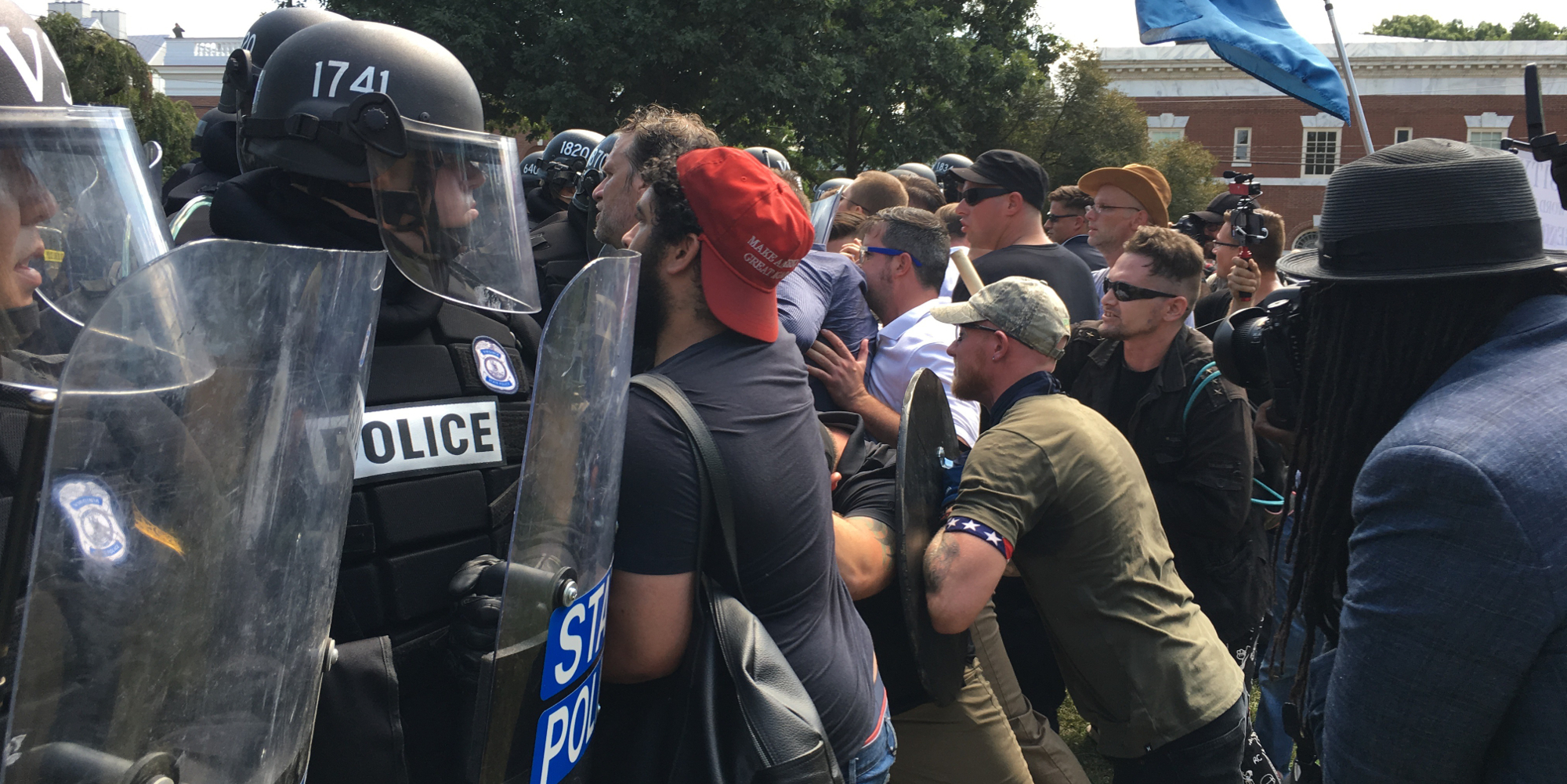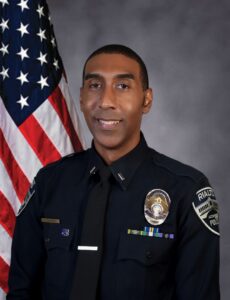Many Americans, including those in leadership positions, believe the dominant terrorist threat to the United States originates abroad and is motivated by an extremist interpretation of Islam. They’re wrong. The narrative that posits terrorism is primarily a tactic of foreign-born extremist Muslims is woefully and dangerously incomplete. It’s time to get our facts straight.
1. White supremacist groups are growing in size, lethality and capability. While the United States spent more than a decade disrupting terrorist organizations abroad, a different threat was growing here at home. Its ambitions were different, but its tactics increasingly mirrored those being used by our adversaries in al Qaeda, ISIS and other groups. This should not come as a surprise.
In 2009, a Department of Homeland Security (DHS) Intelligence and Analysis (I&A) Directorate report, “Rightwing Extremism: Current Economic and Political Climate Fueling Resurgence in Radicalization and Recruitment,” held up a mirror to America that didn’t fit the common narrative (i.e., terrorism is purely a tactic of extremist Muslims). The report found that economic hardship, the election of the first African American president, and the volume of veterans returning from foreign wars (who could be targeted for radicalization and recruitment) were coalescing into a troubling picture of right-wing extremism in America.
The assessment determined that rightwing extremists were leveraging what I refer to as “the Obama effect.” The election of the first African American president with a Muslim father fueled right-wing recruiting and mobilizing efforts. The white supremacist website Stormfront, for example, received such an onslaught of Internet traffic on the night of Barack Obama’s election that the website crashed. Further proof of what was to come: on that same historic night, one in every 100 Google searches that including the word “Obama” also included search terms for “KKK” or the n-word.
Nevertheless, when the I&A report was released, the backlash was overwhelming, driven primarily by the report’s finding that veterans would be attractive for right-wing recruiting and radicalization efforts. The notion that an American military member could become an extremist was unthinkable, even offensive to their service. But the subtext to this negative public reaction revealed a deeper national challenge. We wanted our adversary to be foreign and Muslim. Clear demographic and religious lines bring a sense of comfort, reinforcing the “otherism” narrative that tomorrow’s attacker inevitably hails from another country, another nationality, and another religion.
The facts were clear as day, delivered by dedicated professionals working at the one federal department purely focused on guarding against threats manmade and natural. These were the experts delivering definitive analysis. But America wasn’t ready to accept the truth.
2. Designating an attack as a hate crime obscures a clear view of the threat environment. One reason the public overall (including federal, state and local leaders) struggles to appreciate the scope of the right-wing extremist violence is that it is inconsistently prosecuted as a hate crime and almost never prosecuted as an act or attempted act of terrorism, a situation enabled by the legislative fact that terrorist prosecution often requires the attacker’s motivation to be in furtherance of a foreign terrorist organization or ideology.
For decades, the security community has wrestled over how to define terrorism. There is still no agreement. The government agencies responsible for counterterrorism or terrorism investigations all use slightly different definitions of the acts they seek to prevent. There are, however, three elements to terrorism on which American agencies agree: the essence of the activity is violence; the targets are civilians (which in the U.S. context arguably includes law enforcement officers); and the objective is political (broadly) or ideological in nature.
These three qualities are apparent in scores of attacks perpetrated by non-Muslim, American-born extremists. Yet, most acts of right-wing extremist violence escape public knowledge or mention when they are designated hate crimes, or worse, quickly dismissed under the banner of mental illness, typically diagnosed despite any immediately available medical history.
By this, there are numerous attackers who have escaped the terrorist label, even as it perfectly aligns with their violence and extremist ideologies. Making matters more complicated is that hate crime statistics are typically flawed; bias and criminal motivation are not always easy to determine. What is more, victims and law enforcement underreport such crimes. (Note: We are beginning to see some movement toward prosecuting domestic terrorists as terrorists, such as the case of white supremacist Taylor Wilson who was charged with terrorism in federal court in Nebraska after attempting to derail a cross-country Amtrak train.)
The data on right-wing extremist violence are sobering. A recent study of domestic terrorism incidents from 2008 to 2016 identified 194 cases of executed and/or foiled terrorist acts. These included:
- 63 cases of extremist Muslim terrorism, defined as incidents motivated by the political ideology espoused by groups such as ISIS and al Qaeda; 76% of those plots were foiled.
- 115 cases of right-wing terrorism, involving deaths, injuries or property damage; only a little more than one-third of those plots were foiled.
- Left wing incidents totaled 19 incidents, causing seven fatalities.
Total deaths associated with extremist Muslim incidents were higher, mostly attributed to the attack at Fort Hood in Texas. While more people were murdered in Muslim Identity attacks, right-wing terrorist attacks were independently more lethal. Almost one-third of right-wing incidents resulted in fatalities, while 13% of the extremist Muslim incidents resulted in deaths. It is important to note that 48% of the foiled extremist Muslim incidents were the target of sting operations; this compared to right-wing attacks (12%) or far-left attacks (10.5%).
The lesson in these figures is that right-wing extremist attacks are more likely to kill people, they are less likely to be foiled, and if they are foiled, only about one in ten is due to a purposeful sting operation. The rest, presumably, were due more to luck or an aware, engaged public ready to report dangerous behavior. This is not an adequate approach to a growing homeland security threat.
3. White-supremacist groups use recruiting strategies employed by foreign extremist groups (e.g., ISIS). Right-wing groups are excellent students of ISIS and groups like it. There are currently highly organized efforts to draw new members into the right-wing extremist fold. A 2016 George Washington University Program on Extremism study, “Nazis vs. ISIS on Twitter,” offers a startling insight: since 2012, American white nationalist movement Twitter accounts have seen followers grow more than 600%. The report states: “Today, they outperform ISIS in nearly every social metric, from follower counts to tweets per day.”

The right-wing objective is to leverage online capability to facilitate greater outreach and eliminate the need for physical meetings, thereby increasing operational security. The proof of this is the August 2017 “Unite the Right” rally in Charlottesville, Va. ProPublica reported that white supremacists planning the rally joked about using vehicles to run over their adversaries—which is precisely what a white supremacist did as the protest and counter-protest were dispersing.
That message and thousands more shared among white supremacists were leaked from a chat room app (Discord) and posted to the website of a left-wing media collective identified as Unicorn Riot. It revealed that white supremacist groups devoted months to tracking potential Charlottesville counter-protesters online, infiltrated counter-protest meetings, and posted and shared their identities with law enforcement as likely troublemakers. This is the level of organization and dedication driving the white supremacist movement toward increasing instances of terrorism.
Charlottesville was a seminal event, galvanizing white supremacist and other extreme right-wing groups, which is a rare occurrence. White supremacist groups typically despise groups of similar ideology. Not so in Charlottesville. It should be a clear wake-up call to public safety professionals, lawmakers and leaders across the country. Intelligence reveals these traditionally fractured groups are mirroring al-Qaeda-to-ISIS organizational evolutionary designs. They are becoming highly adaptable and cohesive.
What does the future look like? Not good. This is an increasing threat that is insufficiently addressed, and particularly in the current political and rhetorical environment (whatever one’s leanings), groups that once stuck to the shadows are increasingly present in the public eye.
Case in point, the Southern California-based “Rise Above Movement” (RAM). This group is comprised of a number of convicted felons and offers no illusion about their intentions—
they train to fight, post their assaults online, travel to events in other states, and are fearless in the face of authority.
Troublingly, and for reasons yet-to-be determined, some violent incidents are reportedly being ignored by law enforcement. Four violent attacks documented by ProPublica resulted in one arrest, and charges were never filed in that case. They reported that law enforcement officials in Charlottesville, Huntington Beach, San Bernardino and Berkeley (jurisdictions with video evidence of RAM’s violent activities) either refused to discuss the group or lamented they had insufficient resources to conduct an investigation. This is not to cast conspiracy on Southern California law enforcement. Rather, it is plain evidence that the right-wing threat is continuing to metastasize, and at least in some jurisdictions, it is not even receiving investigation, much less a focused public safety response to what is clearly a terrorist threat.
As security professionals, we are continually thinking of the next threat, the one over the horizon we have failed to imagine. In our current environment, imagination is unnecessary. The next terrorist threat is marching in the streets, waving flags and proclaiming an ideology that posits the moral superiority of one group over another. We have seen this in cities in Syria, Iraq and elsewhere; we know where it leads. It is far past time to orient our security apparatus to address this obvious threat within our borders.
This article was originally published by Homeland Security Today.


